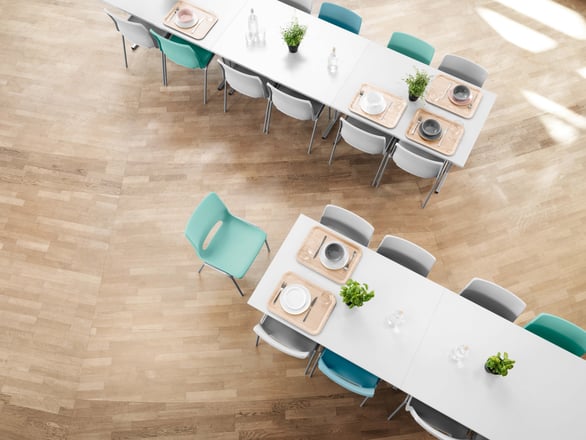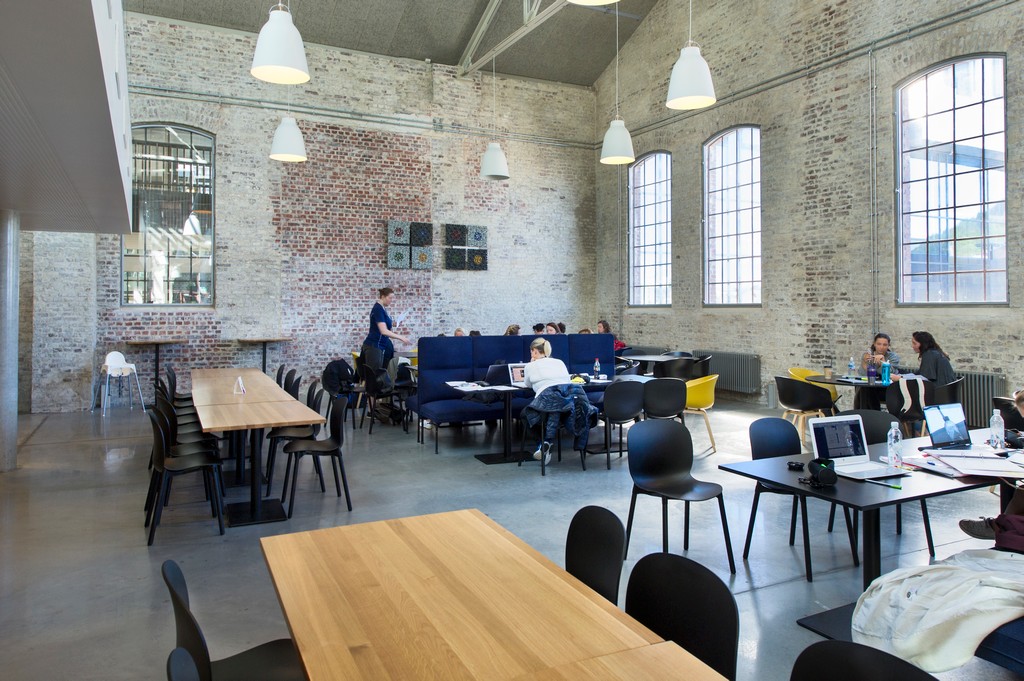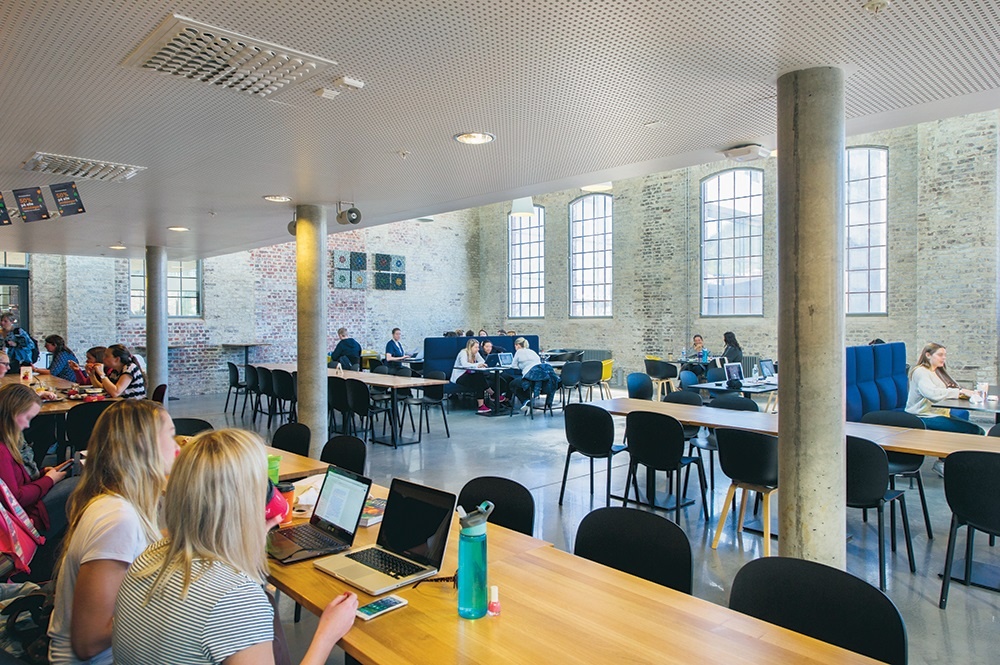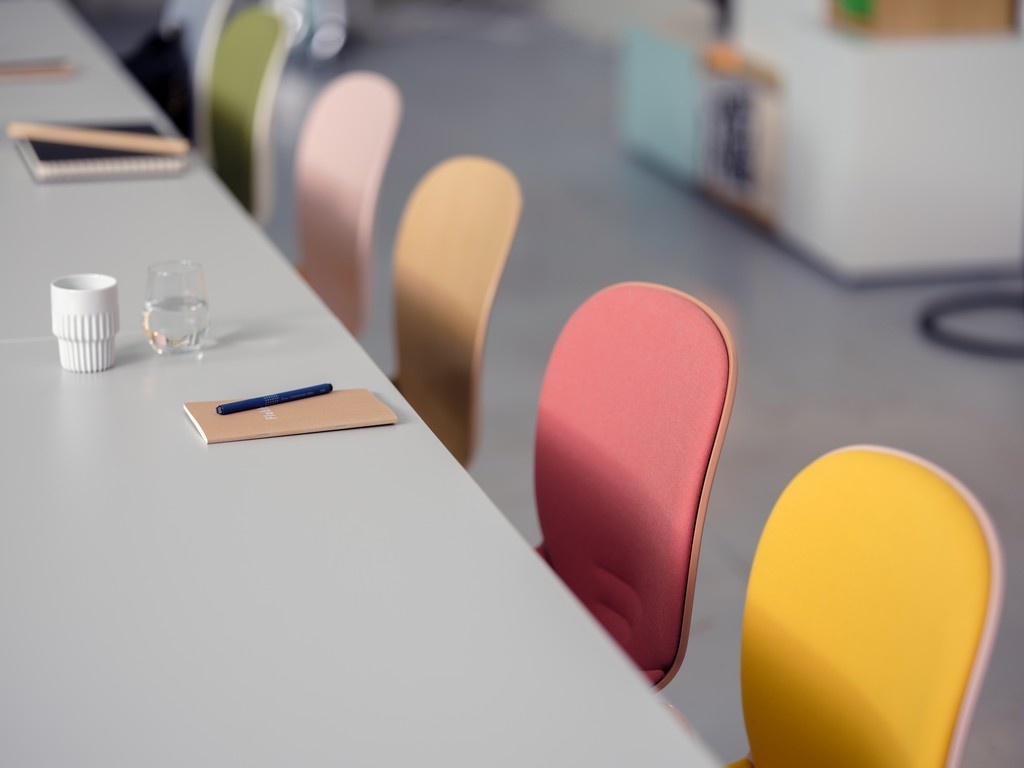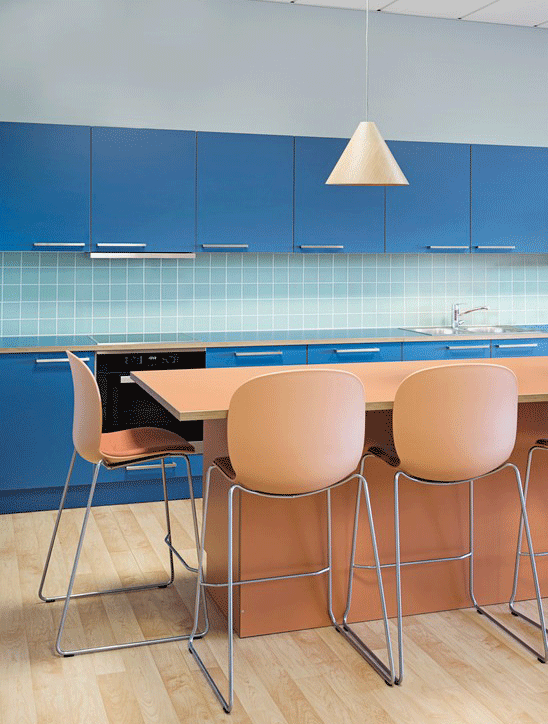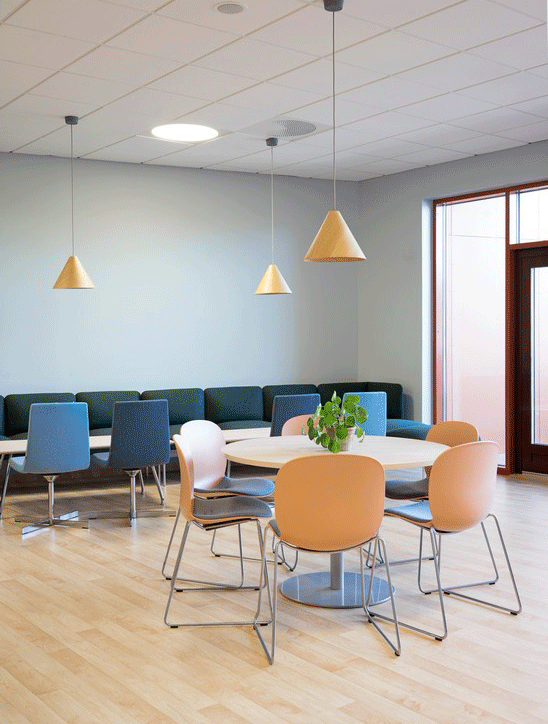1. Design to strengthen student pride
Create an environment that your students want to be a part of. In which way will depend on what kind of education the school or college offers and how the students are and what they like. In a business school, it might, for example, be more important to be a modern environment with a feeling of luxury, while an artistic college could focus more on creative artworks and innovative interior design.
To strengthen student pride and the feeling of belonging, use a combination of mascots, mottos, themes and colours that reflects the academy’s brand.
Learn more about how we can help you with your learning centre
2. Affect your students with colour and lighting
Different colours can affect our feelings, thoughts and behaviours in contrasting ways, therefore you should think carefully about what choices you make when redesigning your educational space. Colours are also something you should choose together with the lighting because light in itself has a colour; towards blue, yellow or red for example, and will change the way the colours look.
Light and cool colours make rooms appear bigger, while warm and dark colours make rooms feel smaller. If it is a big room that is supposed to fit a lot of people during lunch, warm colours can be a good way to prevent the room from feeling vast and impersonal and to create a feeling of intimacy. If it’s a small lunchroom, light and cool colours is a good way to expand the room, and also a way to prevent people from staying for too long and thus create space for new people to sit and eat.
3. Create intimate small group sections
In a big cafeteria room, having booths and cluster seating are ways to create intimate small group sections, for your students to be able to hang out together in a more relaxed environment. Barrier walls and planters are another way to divide a big room up into smaller sections.
4. Make a space that is flexible
Whether your cafeteria is big or small, filling it with flexible furniture gives you the power to make the most of it. Tables and chairs that can easily be arranged or stored neatly give you the opportunity to create multiple settings for different purposes, from formal to regular eating occasions, as well as re-purposing the entire environment for special occasions.
5. Choosing the right cafeteria chairs
The touchable items in a cafeteria – seating and tabletops – plays a big role in people's experience of being in the room. Especially in big rooms, where the walls are far away. When choosing cafeteria chairs, the degree of seating comfort should be chosen after what capacity you have in your lunchroom. With lots of space, you could increase the experience by investing in comfortable seating and soft upholstery, which will make people sit for longer, and with less space, you could do the opposite, but instead go for a nice design.
Whatever choice you go for, you should try to choose ergonomic chairs where possible, that encourage good posture and reduce the chance of slouching.
Read - Choosing cafeteria chairs for learning environments
